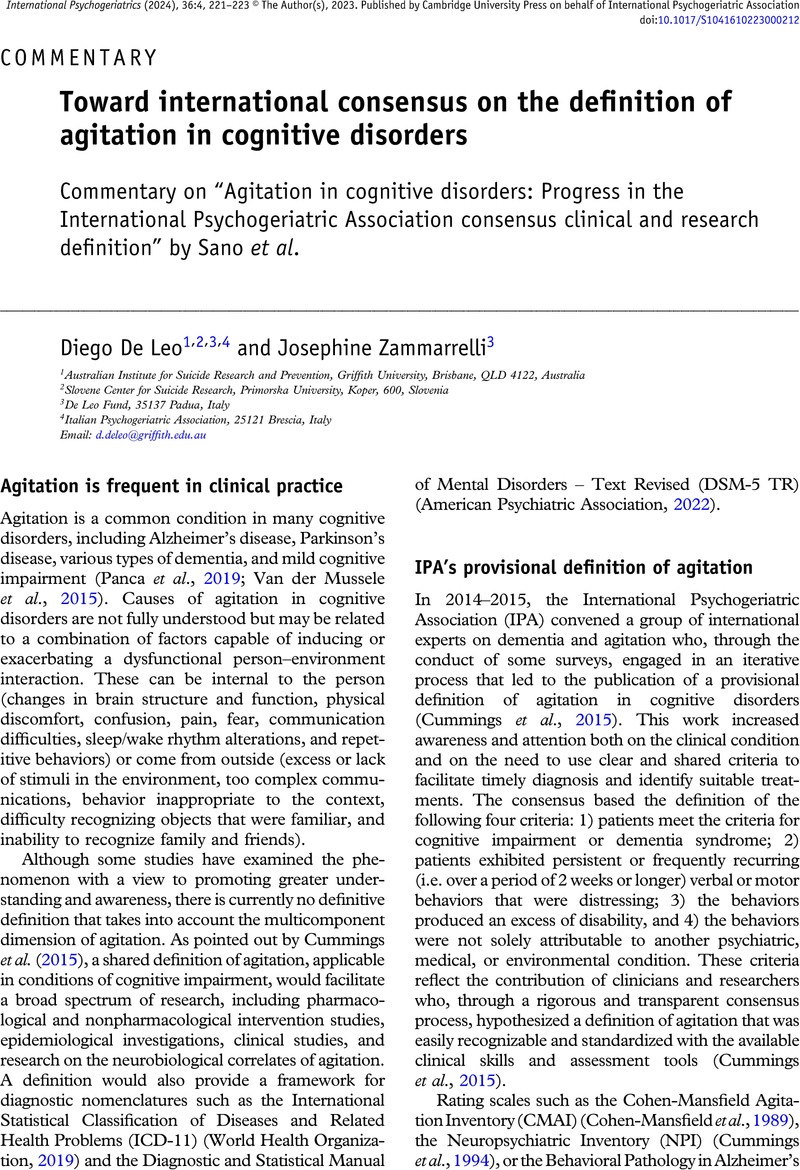No CrossRef data available.
Article contents
Toward international consensus on the definition of agitation in cognitive disorders
Commentary on “Agitation in cognitive disorders: Progress in the International Psychogeriatric Association consensus clinical and research definition” by Sano et al.
Published online by Cambridge University Press: 22 March 2023
Abstract

- Type
- Commentary
- Information
- International Psychogeriatrics , Volume 36 , Special Issue 4: Issue Theme: Behavioral and Physical Impairments in Persons with Cognitive Disorders , April 2024 , pp. 221 - 223
- Copyright
- © The Author(s), 2023. Published by Cambridge University Press on behalf of International Psychogeriatric Association


